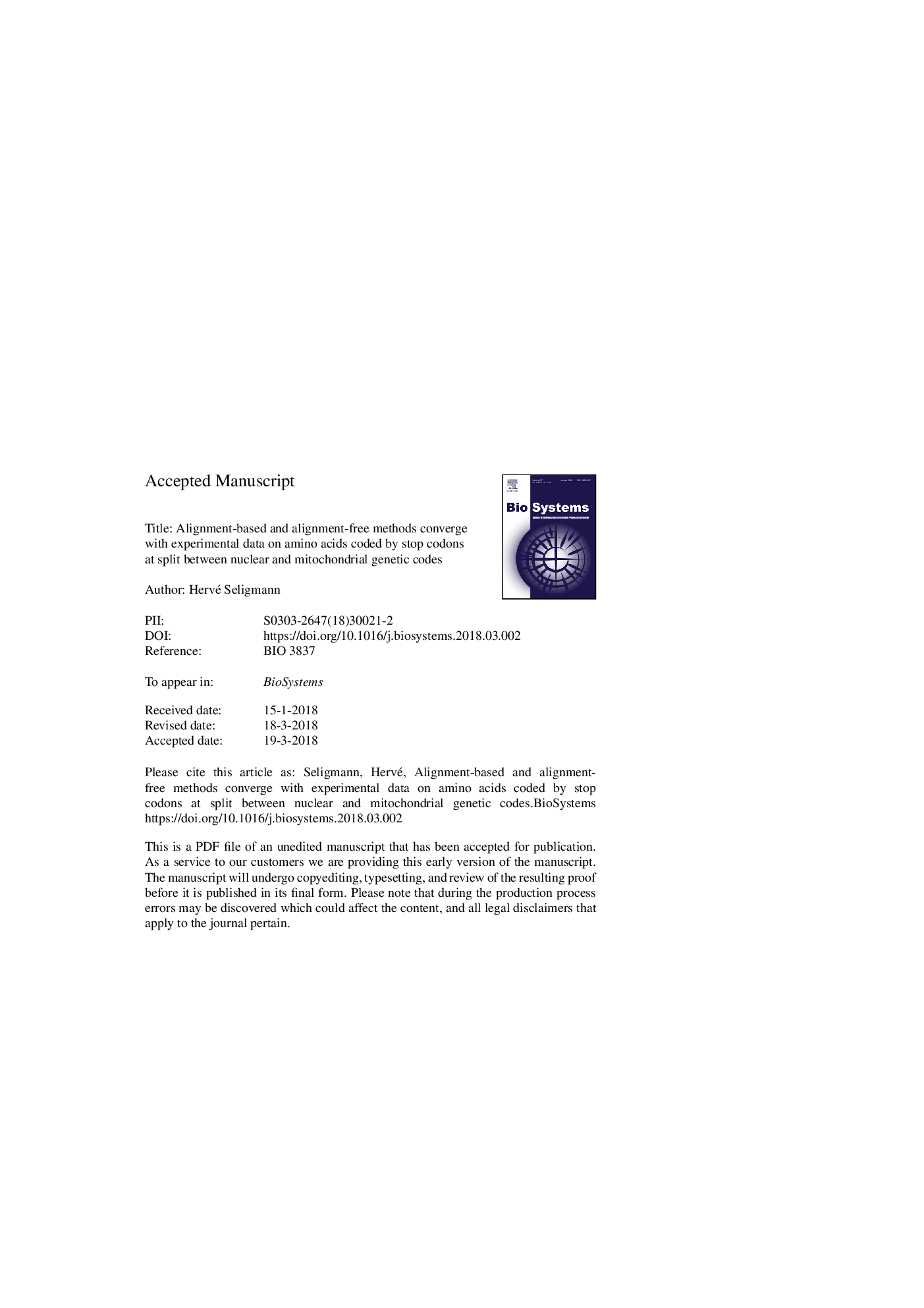| Article ID | Journal | Published Year | Pages | File Type |
|---|---|---|---|---|
| 8406440 | Biosystems | 2018 | 43 Pages |
Abstract
Genetic codes mainly evolve by reassigning punctuation codons, starts and stops. Previous analyses assuming that undefined amino acids translate stops showed greater divergence between nuclear and mitochondrial genetic codes. Here, three independent methods converge on which amino acids translated stops at split between nuclear and mitochondrial genetic codes: (a) alignment-free genetic code comparisons inserting different amino acids at stops; (b) alignment-based blast analyses of hypothetical peptides translated from non-coding mitochondrial sequences, inserting different amino acids at stops; (c) biases in amino acid insertions at stops in proteomic data. Hence short-term protein evolution models reconstruct long-term genetic code evolution. Mitochondria reassign stops to amino acids otherwise inserted at stops by codon-anticodon mismatches (near-cognate tRNAs). Hence dual function (translation termination and translation by codon-anticodon mismatch) precedes mitochondrial reassignments of stops to amino acids. Stop ambiguity increases coded information, compensates endocellular mitogenome reduction. Mitochondrial codon reassignments might prevent viral infections.
Keywords
Related Topics
Physical Sciences and Engineering
Mathematics
Modelling and Simulation
Authors
Hervé Seligmann,
